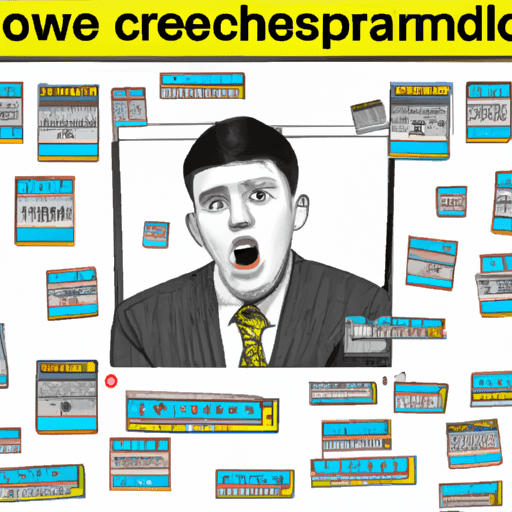H1 tag: The Impact of Intrusive Interstitials on User Experience: A Data-Driven Analysis
H2 tag: Why are Intrusive Interstitials Used?
H3 tag: Intrusive Interstitials as Attention Grabbers
H3 tag: Potential Negative Consequences of Poorly Used Interstitials
H2 tag: The Data on How Users Really Feel About Intrusive Interstitials
H3 tag: 60 Percent of Users Would Leave Due to Intrusive Interstitials
H3 tag: Users Say Pop-ups Are Spammy or Distracting
H2 tag: What We Learned From Our Data
H3 tag: Timed Pop-ups and Incentives for Engagement
H3 tag: A/B Testing and Strategic Use of Interstitial Pop-ups
H2 tag: The Best Way to Use Intrusive Interstitials
H3 tag: Value-Adding Interstitials and Avoiding Spam
H2 tag: Frequently Asked Questions
H3 tag: What is an intrusive interstitial?
H3 tag: What are some examples of intrusive interstitials?
H3 tag: What do interstitials mean for SEO?
H3 tag: Does Google penalize sites with intrusive interstitials?
H3 tag: How effective are interstitials?
H3 tag: What are the benefits of interstitials (if any)?
H2 tag: Conclusion
—
Have you ever been browsing a website and suddenly an interstitial pop-up appears, blocking the entire page and interrupting your experience? Annoying, right? As online shopping continues to become the norm, the use of interstitial pop-ups to capture user information and increase engagement has become a common practice. However, there has been a lot of debate among marketers about the effectiveness of these pop-ups and whether they actually harm a website’s performance. In this article, we will put the debate to rest by conducting a data-driven analysis of shopper behavior to determine the impact of interstitial pop-ups on user experience.
Why are Intrusive Interstitials Used?
Intrusive interstitials are often used as attention grabbers on websites. They are designed to promote certain content or actions and can be used to encourage visitors to sign up for newsletters, receive discounts, or download apps for a seamless shopping experience. However, it’s important to note that interstitial pop-ups can also be used poorly, leading to negative consequences. They can disrupt the user experience and potentially drive visitors away, resulting in a negative impact on search engine rankings. Google has even implemented penalties for sites that use certain intrusive interstitials, particularly on mobile devices.
The Data on How Users Really Feel About Intrusive Interstitials
In order to determine how users really feel about intrusive interstitials, we conducted a data-driven survey that reached 1,000 participants in the US. The survey aimed to investigate users’ experiences with intrusive interstitials, their perceptions of their impact on user experience, and how likely they are to engage with these pop-ups.
The results of the survey were quite enlightening. 60 percent of the respondents said they would leave a site if they were served an intrusive interstitial. Even impulsive shoppers, who are known for making quick purchases, can be dissuaded by interstitials, with 52 percent saying they would leave the site. The biggest reasons users cited for leaving a site after being served an interstitial pop-up were that the site felt spammy, they didn’t want to be sold anything other than what they were looking for, or they felt that the site owner was being obstructive to their experience.
What We Learned From Our Data
Despite their reservations about interstitial pop-ups, most survey respondents still indicated that they would likely engage with these pop-ups if the timing and benefits were right. In fact, 86 percent of the respondents said they are likely to sign up or add their email while shopping in order to get discounts. This suggests that users can still be motivated to engage with interstitial pop-ups if they perceive a high value in doing so.
Based on our observations, it’s clear that strategic use of interstitial pop-ups can lead to lucrative results. By offering incentives such as discounts or exclusive content, and by carefully timing the appearance of the pop-ups, marketers can increase engagement and conversions.
The Best Way to Use Intrusive Interstitials
To make the best use of intrusive interstitials, it’s important to ensure that they do not interrupt the user experience. One effective approach is to use timed pop-ups that appear after the user has spent some time on the website, indicating their engagement and interest. The design of the pop-up should be visually appealing and easy to close. Offering incentives or benefits for users who sign up or provide their information can also help increase engagement. The key is to use interstitial pop-ups in a way that adds value to the user experience, rather than detracting from it.
In conclusion, while interstitial pop-ups can be a useful tool for promoting certain content or actions on a website, they must be used strategically to avoid negatively impacting the user experience. By following the tips and guidelines outlined in this article, marketers can still achieve their goals without driving users away. So, be mindful of how you use interstitial pop-ups and ensure that they add value to your visitors’ browsing experience.
Do you find intrusive interstitials helpful or annoying when browsing websites? Let us know in the comments below!

